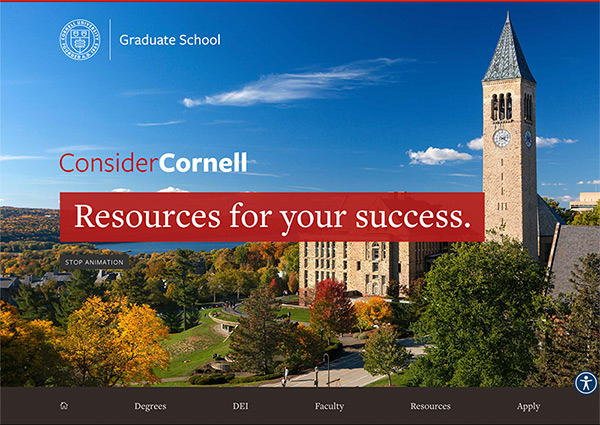- Cookies & Privacy
- GETTING STARTED
- Introduction
- FUNDAMENTALS
- Acknowledgements
- Research questions & hypotheses
- Concepts, constructs & variables
- Research limitations
- Getting started
- Sampling Strategy
- Research Quality
- Research Ethics
- Data Analysis

The purpose statement
The purpose statement is made up of three major components: (1) the motivation driving your dissertation; (2) the significance of the research you plan to carry out; and (3) the research questions you are going to address. Starting the first major chapter of your dissertation (usually Chapter One: Introduction ), the purpose statement establishes the intent of your entire dissertation. Just like a great song that needs a great "hook", the purpose statement needs to draw the reader in and keep their attention. This article explains the purpose of each of these three components that make up the purpose statement.
The "motivation" driving your dissertation
The "significance" of the research you plan to carry out, the "research questions" you are going to address.
Your choice of dissertation topic should be driven by some kind of motivation . This motivation is usually a problem or issue that you feel needs to be addressed or solved. This part of the purpose statement aims to answer the question: Why should we care? In other words, why should we be interested in the research problem or issue that you want to address?
The types of motivation that may drive your dissertation will vary depending on the subject area you are studying, as well as the specific dissertation topic you are interested in. However, some of the broad types of motivation that undergraduate and master's level dissertation students try to address are based around (a) individuals , (b) organisations , and/or (c) society .
Individuals face many problems and issues ranging from those associated with welfare , to health , prosperity , freedoms , security , and so on. From a health perspective, you may be concerned with the rise in childhood obesity and the potential need for regulation to combat the advertising of fast food to children. In terms of welfare and freedoms , you may be interested in the introduction of new legislation that aims to protect discrimination in the workplace, and its implications for small businesses.
Organisations also have a wide range of problems and issues that need to be addressed, whether relating to people , finances , operations , competition , regulations , and so forth. From a people perspective, you may be interested in how organisations use flexible working options to alleviate employee stress and burnout. In terms of regulations , you may be concerned with the growth in Internet piracy and the ways that organisations are dealing with such a threat.
Society is another lens through which you can view problems and issues that need to be addressed. These may relate to a wide range of societal risks or other problems and issues such as factory farming, the potential legalisation of marijuana, the health-related effects of talking on cell phones, and so forth. You may be interested in understanding individuals? views towards the potential legalisation of marijuana; or how these views are influenced by individuals? knowledge of the side-effects of marijuana use.
When communicating the motivation driving your dissertation to the reader, it is important to explain why the problem or issue you are addressing is interesting : that is, why should the reader care? It is not sufficient to simply state what the problem or issue is.
Whilst the motivation component of your purpose statement explains why the reader should care about your dissertation, the significance component justifies the value of the dissertation. In other words: What contribution will the dissertation make to the literature? Why should anyone bother to perform this research? What is its value?
Even though dissertations are rarely "ground-breaking" at the undergraduate or master's level (and are not expected to be), they should still be significant in some way. This component of the Introduction chapter, which follows the motivation section, should explain what this significance is. In this respect, your research may be significant in one of a number of ways. It may:
Capitalise on a recent event
Reflect a break from the past
Target a new audience
Address a flaw in a previous study
Expand a particular field of study
Help an individual, group, organisation, or community
When writing your purpose statement, you will need to explain the relationship between the motivation driving your dissertation and the significance of the research you plan to carry out. These two factors - motivation and significance - must be intrinsically linked; that is, you cannot have one without the other. The key point is that you must be able to explain the relationship between the motivation driving your dissertation and one (or more) of the types of significance highlighted in the bullets above.
The motivation and significance components of your Introduction chapter should signal to the reader the general intent of your dissertation. However, the research questions that you set out indicate the specific intent of your dissertation. In other words, your research questions tell the reader exactly what you intend to try and address (or answer) throughout the dissertation process.
In addition, since there are different types of research question (i.e., quantitative , qualitative and mixed methods research questions), it should be obvious from the significance component of your purpose statement which of these types of research question you intend to tackle [see the section, Research Questions , to learn more].
Having established the research questions you are going to address, this completes the purpose statement. At this point, the reader should be clear about the overall intent of your dissertation. If you are in the process of writing up your dissertation, we would recommend including a Chapter Summaries section after the Research Questions section of your Introduction chapter. This helps to let the reader know what to expect next from your dissertation.

How to Write a Statement of Purpose for Graduate School

Congrats! You’ve chosen a graduate program , read up on tips for applying to grad school , and even wrote a focused grad school resumé . But if you’re like many students, you’ve left the most daunting part of the application process for last—writing a statement of purpose. The good news is, the task doesn’t have to feel so overwhelming, as long as you break the process down into simple, actionable steps. Below, learn how to write a strong, unique statement of purpose that will impress admissions committees and increase your chances of getting into your dream school.
What is a statement of purpose?
A statement of purpose (SOP), sometimes referred to as a personal statement, is a critical piece of a graduate school application that tells admissions committees who you are, what your academic and professional interests are, and how you’ll add value to the graduate program you’re applying to.
Jared Pierce, associate director of enrollment services at Northeastern University, says a strong statement of purpose can be the deciding factor in a graduate student’s admission.
“Your statement of purpose is where you tell your story about who you are and why you deserve to be a part of the [university’s] community. It gives the admissions committee the chance to get to know you and understand how you’ll add value to the classroom,” he says.
How long should a statement of purpose be?
“A statement of purpose should be between 500 and 1,000 words,” Pierce says, noting that it should typically not exceed a single page. He advises that students use a traditional font at a readable size (11- or 12-pt) and leave enough whitespace in the margins to make the statement easy-to-read. Make sure to double-space the statement if the university has requested it, he adds.
Interested in learning more about Northeastern’s graduate programs?
Get your questions answered by our enrollment team.
REQUEST INFORMATION
How to Write a Statement of Purpose: A Step-by-Step Guide
Now that you understand how to format a statement of purpose, you can begin drafting your own. Getting started can feel daunting, but Pierce suggests making the process more manageable by breaking down the writing process into four easy steps.
1. Brainstorm your ideas.
First, he says, try to reframe the task at hand and get excited for the opportunity to write your statement of purpose. He explains:
“Throughout the application process, you’re afforded few opportunities to address the committee directly. Here is your chance to truly speak directly to them. Each student arrives at this process with a unique story, including prior jobs, volunteer experience, or undergraduate studies. Think about what makes you you and start outlining.”
When writing your statement of purpose, he suggests asking yourself these key questions:
- Why do I want this degree?
- What are my expectations for this degree?
- What courses or program features excite me the most?
- Where do I want this degree to take me, professionally and personally?
- How will my unique professional and personal experiences add value to the program?
Jot these responses down to get your initial thoughts on paper. This will act as your starting point that you’ll use to create an outline and your first draft.
2. Develop an outline.
Next, you’ll want to take the ideas that you’ve identified during the brainstorming process and plug them into an outline that will guide your writing.
An effective outline for your statement of purpose might look something like this:
- An attention-grabbing hook
- A brief introduction of yourself and your background as it relates to your motivation behind applying to graduate school
- Your professional goals as they relate to the program you’re applying to
- Why you’re interested in the specific school and what you can bring to the table
- A brief summary of the information presented in the body that emphasizes your qualifications and compatibility with the school
An outline like the one above will give you a roadmap to follow so that your statement of purpose is well-organized and concise.
3. Write the first draft.
Your statement of purpose should communicate who you are and why you are interested in a particular program, but it also needs to be positioned in a way that differentiates you from other applicants.
Admissions professionals already have your transcripts, resumé, and test scores; the statement of purpose is your chance to tell your story in your own words.
When you begin drafting content, make sure to:
- Provide insight into what drives you , whether that’s professional advancement, personal growth, or both.
- Demonstrate your interest in the school by addressing the unique features of the program that interest you most. For Northeastern, he says, maybe it’s experiential learning; you’re excited to tackle real-world projects in your desired industry. Or perhaps it’s learning from faculty who are experts in your field of study.
- Be yourself. It helps to keep your audience in mind while writing, but don’t forget to let your personality shine through. It’s important to be authentic when writing your statement to show the admissions committee who you are and why your unique perspective will add value to the program.
4. Edit and refine your work.
Before you submit your statement of purpose:
- Make sure you’ve followed all directions thoroughly , including requirements about margins, spacing, and font size.
- Proofread carefully for grammar, spelling, and punctuation.
- Remember that a statement of purpose should be between 500 and 1,000 words. If you’ve written far more than this, read through your statement again and edit for clarity and conciseness. Less is often more; articulate your main points strongly and get rid of any “clutter.”
- Walk away and come back later with a fresh set of eyes. Sometimes your best ideas come when you’re not sitting and staring at your computer.
- Ask someone you trust to read your statement before you submit it.
Making a Lasting Impression
Your statement of purpose can leave a lasting impression if done well, Pierce says. It provides you with the opportunity to highlight your unique background and skills so that admissions professionals understand why you’re the ideal candidate for the program that you’re applying to. If nothing else, stay focused on what you uniquely bring to the classroom, the program, and the campus community. If you do that, you’ll excel.
To learn more tricks and tips for submitting an impressive graduate school application, explore our related Grad School Success articles .
Editor’s note: This article was originally published in March 2017. It has since been updated for thoroughness and accuracy.
Subscribe below to receive future content from the Graduate Programs Blog.
About shayna joubert, related articles.

Why Earn a Professional Doctoral Degree?

5 Tips to Get the Most out of Grad School

Is Earning a Graduate Certificate Worth It?
Did you know.
Advanced degree holders earn a salary an average 25% higher than bachelor's degree holders. (Economic Policy Institute, 2021)
Northeastern University Graduate Programs
Explore our 200+ industry-aligned graduate degree and certificate programs.
Most Popular:
Tips for taking online classes: 8 strategies for success, public health careers: what can you do with an mph, 7 international business careers that are in high demand, edd vs. phd in education: what’s the difference, 7 must-have skills for data analysts, in-demand biotechnology careers shaping our future, the benefits of online learning: 8 advantages of online degrees, the best of our graduate blog—right to your inbox.
Stay up to date on our latest posts and university events. Plus receive relevant career tips and grad school advice.
By providing us with your email, you agree to the terms of our Privacy Policy and Terms of Service.
Keep Reading:

Should I Go To Grad School: 4 Questions to Consider

Grad School or Work? How to Balance Both

7 Networking Tips for Graduate Students
- How to Cite
- Language & Lit
- Rhyme & Rhythm
- The Rewrite
- Search Glass
How to Write a Purpose Statement for a Dissertation Proposal
The purpose statement of a dissertation proposal explains why a researcher’s study will be conducted and what the study will accomplish. It guides the research, describes the expected outcomes, and explains the means for collecting data. Purpose statements typically are a half to three-quarters of a page in length and should include a single statement that clearly identifies the research method and design, problem, population and setting.
Identify the Research Method
The purpose statement should clearly indicate the research method to be used in the study. The researcher should identify whether the method will be quantitative or qualitative. Quantitative research uses numerical data. Qualitative research uses descriptive or narrative data.
Identify the Research Design
Once the researcher identifies the research method, the research design should be identified next. Qualitative research designs include: case study, phenomenological, grounded theory and ethnographic. Quantitative research designs include: experimental, correlational and historical. For example, a writer might state that, "The purpose of this qualitative grounded theory study is to develop a theory regarding ninth-grade students who are reading below grade level."
Identify the Problem
An effective purpose statement will relate back to the specific problem identified in the problem statement. The problem explains what will be studied. For example: Ninth-grade students are reading below grade level.
Identify the Population
It should be clear in the purpose statement the specific population the researcher intends to study. The population reflects the individuals who are affected by the problem to be studied, such as ninth-grade high school students who are reading below grade level.
Identify the Setting
Explain where the problem takes place by clearly identifying the setting. The environment should be specific to the population being studied. For example: an urban Title I high school in southwestern Ohio.
- Laerd Dissertation: The Purpose Statement
- Penn State Graduate Writing Center: Writing Conference, Thesis, and Dissertation Proposals
Heather Dennull has been active in the education field since 2003. She teaches developmental English and introductory courses in humanities and philosophy at the college level. She has a master's degree in education and is working toward a doctorate in educational leadership.
Testimonials
Free Resources
PrepScholar GRE Prep
Gre prep online guides and tips, 7 successful statement of purpose examples.
Not sure what graduate schools are looking for in a statement of purpose? Looking at successful graduate school statement of purpose samples can help! In this guide, we’ll orient you to what makes a great statement of purpose or letter of intent for graduate school. Then we’ll provide you with four successful statement of purpose examples from our graduate school experts. We’ll also provide analysis of what makes them successful. Finally, we’ll direct you to even more helpful examples that you can find online!
The Graduate School Statement of Purpose: An Overview
A statement of purpose (also called a letter of intent or a research statement) introduces your interests and experience to the admissions committee. For research-focused programs, like most PhDs and many master’s degrees, your statement of purpose will focus primarily on your past research experience and plans. For more professionally-focused graduate programs, your statement of purpose will primarily discuss how your pursuit of this professional program relates to your past experiences, and how you will use the skills from the program in your future career.
A statement of purpose for grad school is also where you sell the admissions committee on why you belong in their program specifically. Why do you fit there, and how does what they offer fit your interests?

What’s in a Great Grad School Statement of Purpose?
Here are the essential elements of a strong graduate school statement of purpose:
Clear Articulation of Goals and Interests
A strong statement of purpose will clearly and specifically lay out your goals in undertaking the program and what you hope to accomplish with the degree. Again, for a research-focused program, this will focus primarily on the research project(s) you want to undertake while you are there. For a more professional program, discuss what interests you within the professional field and what skills/knowledge you hope to gain through the program.
Quick side note: we've created the world's leading online GRE prep program that adapts to you and your strengths and weaknesses. Not sure what to study? Confused by how to improve your score? We give you minute by minute guide.
You don't NEED a prep program to get a great GRE score. But we believe PrepScholar is the best GRE prep program available right now , especially if you find it hard to organize your study schedule and don't know what to study .
Click here to learn how you can improve your GRE score by 7 points, guaranteed .
You should be as specific as possible in discussing what interests you. Use examples of particular phenomena, tools, or situations that you find exciting. If you are vague or say that everything in the field interests you, you run the risk of seeming unfocused or not actually that passionate.
Don’t worry that being too specific will box you into a particular research area or subfield during your entire tenure in graduate school. Your program understands that interests change—they won’t be pulling out your research statement to cross-reference with your dissertation proposal!
Evidence of Past Experience and Success
A great graduate school statement of purpose will also show programs that you have already been successful. They want applicants that will be able to follow through on their research/professional plans!
To this end, you’ll need to provide evidence of how your background qualifies you to pursue this program and your specific interests in the field. You’ll probably discuss your undergraduate studies and any professional experience you have. But be sure to draw on specific, vivid examples. You might draw on your thesis, major projects you’ve worked on, papers you have written/published, presentations you’ve given, mentors you’ve worked with, and so on. This gives admissions committees concrete evidence that you are qualified to undertake graduate study!

Interest and Fit With the Program
The third essential ingredient to a great statement of purpose is to clearly lay out why you and the program are a good fit. You should be able to identify both specific reasons why your work fits with the program and why the program suits your work/interests! Are there particular professors you’d like to work with? Does the department have a strong tradition in a certain methodology or theory you’re interested in? Is there a particular facet to the curriculum that you’d like to experience?
Showing that you and the program are a match shows that you chose the program thoughtfully and have genuine interest in it. Programs want to admit students who aren’t just passionate about the field. They want students who are genuinely enthused about their specific program and positioned to get the most out of what they have to offer.
Strong Writing
The final essential piece of a strong statement of purpose or letter of intent is strong writing. Writing skills are important for all graduate programs. You’ll need to demonstrate that you can clearly and effectively communicate your ideas in a way that flows logically. Additionally, you should show that you know how to write in a way that is descriptive but concise. A statement of purpose shouldn’t ever be longer than two pages, even without a hard word limit.
Admissions committees for humanities programs may be a little more focused on writing style than admissions officers for STEM programs. But even in quantitative and science-focused fields, written communication skills are an essential part of graduate school. So a strong statement of purpose will always be effectively written. You’ll see this in our statement of purpose for graduate school samples.

Real, Successful Statement of Purpose Samples
In this section, we’ll present four successful graduate school statement of purpose examples from our graduate school experts, along with a brief commentary on each statement. These statements come from a diverse selection of program types to show you how the core essentials of a statement of purpose can be implemented differently for different fields.
Note: identifying information for these statements have been changed—except for example four, which is my statement.
- Statement of Purpose Sample One: Japanese Studies MA

This statement of purpose is notable for its great use of space and its vivid descriptions. The author is able to cram a lot into about a page. She discusses how she came to her two primary research interests (and how they are connected). She integrates this discussion of her interests with information on her past experiences and qualifications for pursuing the course of study. Finally, she includes details on her goals in pursuing the program and components of the program that interest her. Her examples are specific and fleshed-out. There’s a lot very cleverly included in a small amount of page space!
Additionally, the language is very vivid. Phrases like “evocative and visceral” and “steadily unraveling,” are eye-catching and intriguing. They demonstrate that she has the writing skills necessary to pursue both graduate study and her interest in translation.
- Statement of Purpose Sample Two: Music MM
This sample is fairly long, although at 12 point Times New Roman it’s under two pages single-spaced. The length of this statement is partially due to the somewhat expansive nature of the prompt, which asks what role music has played in the applicant’s life “to date.” This invites applicants to speak more about experiences further in the past (in the childhood and teen years) than is typical for a statement of purpose. Given that this is for a master’s degree in music, this is logical; musical study is typically something that is undertaken at a fairly young age.
This statement does an excellent job describing the student’s past experiences with music in great detail. The descriptions of the student’s past compositions and experiences performing new music are particularly vivid and intriguing.
This statement also lays out and elaborates on specific goals the student hopes to pursue through the program, as well as features particular to the program that interest the student (like particular professors).

- Statement of Purpose Sample Three: Economics PhD

One of the first things you’ll likely notice about this statement is that it’s a little on the longer side. However, at 12 point Times New Roman font and single-spaced, it still comes in under 2 pages (excluding references). It makes sense for a PhD statement of purpose sample to be longer than a master’s degree statement of purpose—there’s more to lay out in terms of research interests!
The writing style is fairly straightforward—there’s definitely a stronger focus on delivering content than flashy writing style. As Economics is a more quantitative-focused field, this is fine. But the writing is still well-organized, clear, and error-free.
The writer also gives numerous examples of their past work and experience, and shows off their knowledge of the field through references, which is a nice touch.
- Statement of Purpose Sample Four: History of the Book MA
This is actually my statement of purpose. It was for a program that I got accepted to but did not end up attending, for a Master’s in the History of the Book. You’ll notice that the two essay prompts essentially asked us to split our statement of purpose into two parts: the first prompt asked about our research interests and goals, and the second prompt asked about our relevant experience and qualifications.
I’ll keep my comments on this graduate school statement of purpose sample brief because I’ll do a deep dive on it in the next section. But looking back at my statement of purpose, I do a good job outlining what within the field interests me and clearly laying out how my past experiences have qualified me for the program.
Obviously this statement did its job, since I was accepted to the program. However, if I were to improve this statement, I’d change the cliche beginning (“since I was a child”) and provide more specificity in what about the program interested me.

Deep Dive Analysis of a Sample Statement of Purpose for Graduate School
Next, we’ll do a paragraph by paragraph analysis of my statement, statement of purpose sample four. I’ll analyze its strengths and suggest ways I could shore up any weaknesses to make it even stronger.
Essay 1: Academic Interests
To refresh, here’s the first prompt: Please give a short statement that describes your academic interests, purpose, objectives and motivation in undertaking this postgraduate study. (max 3500 chars – approx. 500 words)
Want to improve your GRE score by 7 points? We have the industry's leading GRE prep program. Built by world-class instructors with 99th percentile GRE scores , the program learns your strengths and weaknesses through machine learning data science, then customizes your prep program to you so you get the most effective prep possible.
Try our 5-day full access trial for free:
Paragraph 1
Since I was a child, my favorite thing has always been a book. Not just for the stories and information they contain, although that is a large part of it. Mostly, I have been fascinated by the concept of book as object—a tangible item whose purpose is to relate intangible ideas and images. Bookbindings and jackets, different editions, the marginalia in a used book—all of these things become part of the individual book and its significance, and are worth study and consideration. Books and their equivalent forms—perfect bound, scrolled, stone tablets, papyrus—have long been an essential part of material culture and are also one of our most significant sources of information about the human historical past. Through both the literal object of the book, the words contained thereon, and its relationship to other books—forms of context, text and intertext—we are able to learn and hopefully manage layers of information with which we would otherwise have no familiarity.
First, the good: this paragraph does a good job introducing my academic interest in the book-as-object, and shows off pre-existing knowledge both of the study of material culture and literary theory. Additionally, the language is engaging: the juxtaposition of “tangible” and “intangible” in the beginning and phrases like “perfect bound, scrolled, stone tablets, papyrus” lend life to the writing and keep the reader engaged.
If I were to go back and improve this paragraph, first, I would absolutely change the first sentence to something less cliche than talking about my childhood. I might try something like “My love of books is a multifaceted thing. I don’t only love them for the stories and….” Second, I would chill out on the em dashes a little bit. Three sets in one paragraph is a little excessive. Finally, I might actually cut this paragraph down slightly to make more room word-wise later in the statement to discuss what specific things about the program interest me.

Paragraph 2
Furthermore, blogs, webcomics, digital archives, e-readers, and even social media sites like tumblr and Facebook have revolutionized the concept of the book by changing how we share and transmit ideas and information, just as the Gutenberg printing press revolutionized the book all those years ago in the fifteenth century. Once again there has been an explosion both in who can send out information and who can receive it.
This paragraph briefly and effectively introduces my other main academic interest: how new technology has changed the concept of the book-as-object. The tie-back to the printing press is a nice touch; it’s a vivid example that shows that I’m aware of important historical moments in book history.
Paragraph 3
I am deeply interested in the preservation of the physical book, as I think it is an important part of human history (not to mention a satisfying sensory experience for the reader). However I am also very concerned with the digitization and organization of information for the modern world such that the book, in all of its forms, stays relevant and easy to access and use. Collections of books, archives, and information as stored in the world’s servers, libraries and museums are essential resources that need to be properly organized and administered to be fully taken advantage of by their audiences. My purpose in applying to the University of Edinburgh’s Material Culture and History of the Book is to gain the skills necessary to keep all forms of the book relevant and functional in an age when information can move more radically than ever before.
This paragraph actually has a focus problem. Since it covers two topics, I should split it into two paragraphs: one on the integration of my two interests, and one on my goals and interests in the program. I could also stand to expand on what features the program has that interest me: professors I’d like to work with, particular aspects of the curriculum, etc.
In spite of these things, however, this paragraph does a good job clearly integrating the two academic interests related to the book I introduced in the first two paragraphs. And the language is still strong —“satisfying sensory experience” is a great phrase. However, I’ve been using the word “information,” a lot; I might try to replace with appropriate synonyms (like “knowledge”) in a couple of places.
Paragraph 4
Additionally, I intend on pursuing a PhD in Library and Information Sciences upon completion of my master’s and I feel that this program while make me uniquely suited to approach library science from a highly academic and interdisciplinary perspective.
This final paragraph offers just quick touch on my future goals beyond the program. It’s typically fine for this to be relatively brief, as it is here, just so long as you can clearly identify some future goals.

Essay 2: Relevant Experience
The second prompt just asked me to describe my relevant knowledge, training, and skills.
As a folklore and mythology student, I have gained a robust understanding of material culture and how it relates to culture as a whole. I have also learned about the transmission of ideas, information, stories and pieces of lore among and between populations, which is an important component of book history. Folklore is also deeply concerned with questions of the literary vs. oral lore and the tendency for text to “canonize” folklore, and yet text can also question or invert canonized versions; along with this my studies in my focus field of religion and storytelling have been deeply concerned with intertextuality. One of my courses was specifically concerned with the Heian-period Japanese novel The Tale of Genji and questions of translation and representation in post-Heian picture scrolls and also modern translations and manga. In addition to broader cultural questions concerned with gender and spirituality both in historical Japan and now, we considered the relationships between different Genji texts and images.
This is a strong, focused paragraph. I relate my academic background in Folklore and Mythology to my interests in studying the book, as well as showing off some of my knowledge in the area. I also chose and elaborated on a strong example (my class on the Tale of Genji ) of my relevant coursework.
I also have work experience that lends itself to the study of the book. After my freshman year of college I interned at the Chicago History Museum. Though I was in the visitor services department I was exposed to the preservation and archival departments of the museum and worked closely with the education department, which sparked my interest in archival collections and how museums present collection information to the public. After my sophomore year of college and into my junior year, I worked at Harvard’s rare books library, Houghton. At Houghton I prepared curated collections for archival storage. These collections were mostly comprised of the personal papers of noteworthy individuals, categorized into alphabetical folders. This experience made me very process-oriented and helped me to understand how collections come together on a holistic basis.
This paragraph also has a clear focus: my past, relevant work experience. Discussing archival collections and presenting information to the public links the interests discussed in my first statement with my qualifications in my second statement. However, if I were to revise this paragraph, I would add some specific examples of the amazing things I worked on and handled at Houghton Library. In that job, I got to touch Oliver Cromwell’s death mask! An interesting example would make this paragraph really pop even more.
Finally, in my current capacity as an education mentor in Allston, a suburb of Boston, I have learned the value of book history and material culture from an educational perspective. As a mentor who designs curriculum for individual students and small groups, I have learned to highly value clearly organized and useful educational resources such as websites, iPad apps, and books as tools for learning. By managing and organizing collections in a way that makes sense we are making information accessible to those who need it.
This final paragraph discusses my current (at the time) work experience in education and how that ties into my interest in the history of the book. It’s an intriguing connection and also harkens back to my discussion of information availability in the paragraph three of the first statement. Again, if I were to amp up this statement even more, I might include a specific example of a book-based (or book technology-based) project I did with one of my students. I worked on things like bookbinding and making “illuminated manuscripts” with some of my students; those would be interesting examples here.
This statement is split into two parts by virtue of the two-prompt format. However, if I were to integrate all of this information into one unified statement of purpose, I would probably briefly introduce my research interests, go in-depth on my background, then circle back around to speak more about my personal interests and goals and what intrigues me about the program. There’s not really one correct way to structure a statement of purpose just so long as it flows well and paragraphs are structured in a logical way: one topic per paragraph, with a clear topic and concluding sentence.

More Statement of Purpose Examples
We’ve provided you with four great graduate school statement of purpose examples from our graduate school experts. However, if you’re looking for more, there are other sample letters of intent and statements of purpose for graduate school online. We’ve rounded up the best ones here, along with some strengths and weaknesses about each example.
Majortests Statement of Purpose Sample
This is a fairly straightforward, clearly written statement of purpose sample for a biology program. It includes useful commentary after each paragraph about what this statement of purpose is accomplishing.
- This statement of purpose sample is well-organized, with clear topic sentences and points made in each paragraph.
- The student clearly identifies what interests her about the program.
- The student proactively addresses questions about why she hasn’t gone directly to graduate school, and frames her professional research experience as a positive thing.
- She gives a tiny bit of color about her personality in a relevant way by discussing her involvement with the Natural History Society.
- In general, discussing high school interests is too far back in time unless the anecdote is very interesting or unusual. The detail about The Theory of Evolution is intriguing; the information about the high school teacher seems irrelevant. The student should have condensed this paragraph into a sentence or two.
- While this statement is cogently written and makes the candidate sound competent and well-qualified, it’s not exactly the most scintillating piece of writing out there. Some of the constructions are a little awkward or cliche. For example, the “many people have asked me” sentence followed by “the answer is” is a little bit clunky. This is probably fine for a STEM program. But just be aware that this statement is not a paragon of writing style.
Want to improve your GRE score by 7+ points?
Check out our best-in-class online GRE prep program . We guarantee your money back if you don't improve your GRE score by 7 points or more.
PrepScholar GRE is entirely online, and it customizes your prep program to your strengths and weaknesses . We also feature 2,000 practice questions , official practice tests, 150 hours of interactive lessons, and 1-on-1 scoring and feedback on your AWA essays.
Check out our 5-day free trial now:
UC Berkeley History Statement of Purpose Sample
This is a graduate school statement of purpose example from the UC Berkeley History department’s PhD program, with annotations from a professor as to why it’s a successful statement.
- The author is able to very clearly and articulately lay out her research interests and link them to past work she has successfully completed, namely, her thesis.
- She is able to identify several things about the program and Berkeley that indicate why it is a good fit for her research interests.
- She addresses the time she spent away from school and frames it as a positive, emphasizing that her use of time was well-considered and productive.
- Her writing is very vivid, with excellent word choice and great imagery.
While very well-written and engaging, this sample statement of purpose for graduate school is a little bit on the long side! It’s a little over two single-spaced pages, which is definitely pushing the limits of acceptable length. Try to keep yours at 2 pages or less. Some of the information on the thesis (which comprises over half of the statement of purpose) could be condensed to bring it down to two pages.

Pharmacy Residency Letter of Intent Sample
This is not technically a sample letter of intent for graduate school because it’s actually for a pharmacy residency program. However, this example still provides illumination as to what makes a decent graduate school letter of intent sample.
- This is a serviceable letter of intent: the writer clearly lays out their own goals within the field of pharmacy, what qualifications they have and how they’ve arrived at their interests, and how the program fits their needs.
- The writing is clearly structured and well-organized.
- The main weakness is that some of the writer’s statements come across as fairly generic. For example, “The PGY-1 Residency Program at UO Hospitals will provide me with the opportunity to further develop my clinical knowledge, critical thinking, teaching, research, and leadership skills” is a generic statement that could apply to any residency program. A punchier, more program-specific conclusion would have amped up this letter.
- While the writer does a decent job providing examples of their activities, like working as a tutor and attending the APhA conference, more specificity and detail in these examples would make the statement more memorable.
- There’s a typo in the last paragraph —a “to” that doesn’t belong! This is an unprofessional blip in an otherwise solid letter. Read you own letter of intent aloud to avoid this!
NIU Bad Statement of Purpose Example
This is an ineffective graduate school statement of purpose example, with annotations on why it doesn’t work.
As you might imagine, the main strength in this document is as an example of what not to do. Otherwise, there is little to recommend it.
- The annotations quite clearly detail the weaknesses of this statement. So I won’t address them exhaustively except to point out that this statement of purpose fails at both content and style. The author includes irrelevant anecdotes and lists without offering a decisive picture of interests or any particular insight into the field. Additionally, the statement is riddled with grammatical mistakes, awkward sentence structures, and strange acronyms.
- You’ll note that the commentary advises you to “never start with a quote.” I agree that you should never start with a freestanding quote as in this example. However, I do think starting with a quote is acceptable in cases like the Berkeley history example above, where the quote is brief and then directly linked to the research interest.

Graduate School Statement of Purpose Examples: 4 Key Points
Graduate programs ask for statement of purpose to hear about your interests and goals and why you think you and the program would be a good fit.
There are four key elements to a successful statement of purpose:
- A clear articulation of your goals and interests
- Evidence of past experiences and success
- Interest and fit with the program
- Strong writing
We’ve provided you with four successful statement of purpose samples from our graduate school experts!
We also provided additional statement of purpose samples (and a sample letter of intent) for graduate school from other sources on the internet. Now you have all kinds of guidance!
What’s Next?
If you’re looking for more information on graduate school , see our guide to what makes a good GPA for grad school .
Not sure if you need to take the GRE ? See if you can get into graduate school without GRE scores .
Want more information about the GRE? We can help you figure out when to take the GRE , how to make a GRE study plan , and how to improve your GRE score .
Ready to improve your GRE score by 7 points?
Author: Ellen McCammon
Ellen is a public health graduate student and education expert. She has extensive experience mentoring students of all ages to reach their goals and in-depth knowledge on a variety of health topics. View all posts by Ellen McCammon


Writing the Statement of Purpose
The statement of purpose should convince the admissions committee that your achievements show promise for your success in graduate study. Think of the statement of purpose as a composition with four different parts.
Make sure to check on the appropriate departmental website to find out if your statement should include additional or specific information.
Part 1: Introduce yourself, your interests and motivations
Tell them what you’re interested in, and perhaps, what sparked your desire for graduate study. This should be short and to the point; don’t spend a great deal of time on autobiography.
Part 2: Summarize your undergraduate and previous graduate career
a) Research you conducted. Indicate with whom, the title of the project, what your responsibilities were, and the outcome. Write technically, or in the style of your discipline. Faculty are the people who read these statements.
b) Important paper or thesis project you completed, as well as anything scholarly beyond your curricular requirements.
c) Work experience, especially if you had any kind of responsibility for testing, designing, researching or interning in an area similar to what you wish to study in graduate school.
Part 3: Discuss the relevance of your recent and current activities
If you graduated and worked prior to returning to graduate school, indicate what you’ve been doing: company or non-profit, your work/design team, responsibilities, what you learned. You can also indicate here how this helped you focus your graduate studies.
Part 4: Elaborate on your academic interests
Here you indicate what you would like to study in graduate school in enough detail to convince the faculty that you understand the scope of research in their discipline, and are engaged with current research themes.
a) Indicate the area of your interests. Ideally, pose a question, define a problem, or indicate a theme that you would like to address, and questions that arise from contemporary research. This should be an ample paragraph!
b) Look on the web for information about departments you’re interested in, including professors and their research. Are there professors whose research interests parallel yours? If so, indicate this. Check the specific program; many may require you to name a professor or professors with whom you might work.
c) End your statement in a positive manner, indicating your excitement and readiness for the challenges ahead of you.
Essential Tips
1. What the admissions committee will read between the lines: self-motivation, competence, potential as a graduate student.
2. Emphasize everything from a positive perspective and write in an active, not a passive voice.
3. Demonstrate everything by example; don’t say directly that you’re a persistent person, show it.
4. If there is something important that happened to you that affected your grades, such as poverty, illness, or excessive work, state it. Write it affirmatively, showing your perseverance despite obstacles. You can elaborate more in your personal statement.
5. Make sure everything is linked with continuity and focus.
6. Unless the specific program says otherwise, be concise; an ideal essay should say everything it needs to with brevity. Approximately 500 to 1000 well-selected words (1-2 single space pages in 12 point font) is better than more words with less clarity and poor organization.
Crafting the Purpose Statement
The following will discuss the scope and nature of the dissertation problem statement; after reviewing it, you should be able to discuss these elements of the purpose statement:
- Answers research question;
- Contributes to wider social or community problem; and
- Speaks to a specific audience.
The following will also guide you through the steps of crafting a successful purpose statement. At the conclusion, you should be able to write your own purpose statement in the Dissertation Research Seminar courseroom.
The Scope of the Purpose Statement
Before we look at actually writing the purpose statement, let's be clear about its scope. The core purpose of any research study is to answer the research question, and by doing so, to help solve the research problem.
The wider social or psychological problems that exist in the world (for example, stopping or treating childhood abuse, narrowing the achievement gap in the schools, or developing more ethical decision making principles for organizations) cannot be solved by a single research project. The research problem, however, should be solvable, and that is the core purpose of the study.
To contribute scientific knowledge toward solving some wider social or community problem is a second purpose, and usually this purpose is addressed to a specific audience.
The Purpose is the Key Challenge
You'll recall from Track 1 that you learned that scholarly writings—such as literature reviews, papers, dissertations, and articles—always address a key challenge. Think of meeting the key challenge of the dissertation as its purpose. As you recall, key challenges consist of:
- A question to be answered;
- A problem to be solved; or
- A thesis to be argued.
In the dissertation, the key challenge is to answer the research question.
Put another way, the broad purpose of your study is essentially to contribute some information to a scholarly audience or to the wider community of interest as it wrestles with a problem it considers important, by means of solving the more narrowly focused research problem. In your purpose statement, you will lay out your argument the research problem should solve in order to contribute to the broader knowledge about the problem.
Two Foundations of the Purpose Statement
Two foundations, or bases, support your argument.
The first is: The current literature and research evidence, showing how your study takes the next step in the research process, fills an important gap in the literature, or corrects a previous mistake or flaw. You will already have established that in your literature review and in your statement of the research problem (which is based on the lit review).
For example, consider the large social problem of obesity in America. Clearly there are psychological factors involved, but a single dissertation can never solve such a serious and complex social problem. However, it can contribute meaningful information to the effort. The purpose statement shows specifically what your study means to contribute to the larger community's knowledge base.
The second foundation to build on is Logic. A strong purpose section shows how the transition from the general problem to the research problem is logical, and that therefore answering the research question is a logical means to the end of contributing knowledge to the problem.
For example, the claim (which would be supported with evidence from the literature) might be that the wider social problem of obesity may not be solved until a narrowly focused study is completed regarding which early childhood psychological factors best predict later obesity. The logic would be that such knowledge would be a more effective guide to intervention. This claim must be logically sound as well as literature based. In the purpose statement, you will outline the logic of your claim that your study has a meaningful purpose.
To recap, your purpose statement links your specific study to some wider social or community problem that your specialization or some other audience considers meaningful, and then shows that answering the research question will in fact contribute meaningfully to that audience and effort.
Remember: The core purpose of the study is to answer the research question and thereby to solve the research problem, in order to provide meaningful information about some smaller aspect of the wider problem.
Let's look at some simple steps to crafting successful purpose statements.
Crafting Purpose Statements: Step 1
You've already written your literature review—or at least worked it into sufficient shape to support your research problem statement. From that, you crafted a research question. So you've already provided the first foundation, the literature on the problem. Your first step in crafting a purpose statement is simply to very succinctly remind readers of the larger context, the social or community problem. This should not take more than a paragraph, that is, a minimum of four sentences, although it may be longer. You will already have done this work in the lit review and the background to your problem statement, so simply remind your reader of the background social or community problem.
By the way, the word "community problem" can mean two things: Either it means a community of interest—say, teachers, or managers, or clinicians interested in the problem—or it can mean a community of scholars—say, researchers interested in the problem.
This community is your audience.
A social problem can interest many different groups in that society, while a community problem will interest only the people in the relevant community. This is why we identify the study's audience in the purpose statement.
Crafting a succinct and clear reminder of the wider problem your study will contribute to is step 1 in crafting a good purpose statement. Again, it need not be more than a paragraph or two. Be sure to identify the intended audience or audiences. And as you learned in Track 1, each paragraph ought to follow the MEAL Plan.
Crafting Purpose Statements: Step 2
You have your summary reminder of the wider problem. Now, write a paragraph or two that will remind readers that the research problem you developed expresses a more focused need in the field for information about the wider issue.
Where does this assertion come from? Once again, it's based on the literature review. You need not repeat that here, just remind your readers of the research problem you have already constructed from the lit review.

Crafting Purpose Statements: Step 3
Next, write a paragraph to link your research question to the research problem and the wider social or community problem. This is where your logical argument takes place. Show the readers that it makes sense to ask the research question because answering it will provide some relevant information about the wider problems.
Don't merely assert, argue. This means that you bring both logic and evidence to bear on your claim.
Crafting Purpose Statements: Step 4
Now, sum up your argument in a final paragraph. The purpose of the study will be to answer the research question in order to solve the research problem and to contribute information about the wider social or community problem to a specific audience or audiences.
Of course, you'll use specific language relevant to your specific problem and question. Don't just write, "The purpose of the study is to answer the research question in order to solve the research problem," and so on. Use words that clearly and plainly describe your unique study.
Thank you for your attention. You now have the tools to create a meaningful purpose statement for your dissertation. You can download a copy of the transcript of the presentation to use in crafting your own purpose statement, step by step. Now, please return to the Dissertation Research Seminar Track 2 Courseroom and complete the activity.
Doc. reference: phd_t2_u05s1_craftps.html
- Statement of Purpose, Personal Statement, and Writing Sample
Details about submitting a statement of purpose, personal statement, and a writing sample as part of your degree program application
- Dissertation
- Fellowships
- Maximizing Your Degree
- Before You Arrive
- First Weeks at Harvard
- Harvard Speak
- Pre-Arrival Resources for New International Students
- Alumni Council
- Student Engagement
- English Proficiency
- Letters of Recommendation
- Transcripts
- After Application Submission
- Applying to the Visiting Students Program
- Admissions Policies
- Cost of Attendance
- Express Interest
- Campus Safety
- Commencement
- Diversity & Inclusion Fellows
- Student Affinity Groups
- Recruitment and Outreach
- Find Your Financial Aid Officer
- Funding and Aid
- Financial Wellness
- Consumer Information
- Life Sciences
- Policies (Student Handbook)
- Student Center
- Title IX and Gender Equity
Statement of Purpose
The statement of purpose is very important to programs when deciding whether to admit a candidate. Your statement should be focused, informative, and convey your research interests and qualifications. You should describe your reasons and motivations for pursuing a graduate degree in your chosen degree program, noting the experiences that shaped your research ambitions, indicating briefly your career objectives, and concisely stating your past work in your intended field of study and in related fields. Your degree program of interest may have specific guidance or requirements for the statement of purpose, so be sure to review the degree program page for more information. Unless otherwise noted, your statement should not exceed 1,000 words.
Personal Statement
A core part of the Harvard Griffin GSAS mission is to identify and attract the most promising students to form a dynamic and diverse community. We are committed to educating individuals who reflect the growing diversity of perspectives and life experiences represented in society today and who will contribute to our commitment to sustain a welcoming, supportive, and inclusive environment. Please share how your experiences or activities will advance our mission and commitment. Your statement should be no longer than 500 words.
Writing Sample
Please visit Degree Programs and navigate to your degree program of interest to determine if a writing sample is required. When preparing your writing sample, be sure to follow program requirements, which may include format, topic, or length.
Share this page
Explore events.
Developing a Thesis Statement
Many papers you write require developing a thesis statement. In this section you’ll learn what a thesis statement is and how to write one.
Keep in mind that not all papers require thesis statements . If in doubt, please consult your instructor for assistance.
What is a thesis statement?
A thesis statement . . .
- Makes an argumentative assertion about a topic; it states the conclusions that you have reached about your topic.
- Makes a promise to the reader about the scope, purpose, and direction of your paper.
- Is focused and specific enough to be “proven” within the boundaries of your paper.
- Is generally located near the end of the introduction ; sometimes, in a long paper, the thesis will be expressed in several sentences or in an entire paragraph.
- Identifies the relationships between the pieces of evidence that you are using to support your argument.
Not all papers require thesis statements! Ask your instructor if you’re in doubt whether you need one.
Identify a topic
Your topic is the subject about which you will write. Your assignment may suggest several ways of looking at a topic; or it may name a fairly general concept that you will explore or analyze in your paper.
Consider what your assignment asks you to do
Inform yourself about your topic, focus on one aspect of your topic, ask yourself whether your topic is worthy of your efforts, generate a topic from an assignment.
Below are some possible topics based on sample assignments.
Sample assignment 1
Analyze Spain’s neutrality in World War II.
Identified topic
Franco’s role in the diplomatic relationships between the Allies and the Axis
This topic avoids generalities such as “Spain” and “World War II,” addressing instead on Franco’s role (a specific aspect of “Spain”) and the diplomatic relations between the Allies and Axis (a specific aspect of World War II).
Sample assignment 2
Analyze one of Homer’s epic similes in the Iliad.
The relationship between the portrayal of warfare and the epic simile about Simoisius at 4.547-64.
This topic focuses on a single simile and relates it to a single aspect of the Iliad ( warfare being a major theme in that work).
Developing a Thesis Statement–Additional information
Your assignment may suggest several ways of looking at a topic, or it may name a fairly general concept that you will explore or analyze in your paper. You’ll want to read your assignment carefully, looking for key terms that you can use to focus your topic.
Sample assignment: Analyze Spain’s neutrality in World War II Key terms: analyze, Spain’s neutrality, World War II
After you’ve identified the key words in your topic, the next step is to read about them in several sources, or generate as much information as possible through an analysis of your topic. Obviously, the more material or knowledge you have, the more possibilities will be available for a strong argument. For the sample assignment above, you’ll want to look at books and articles on World War II in general, and Spain’s neutrality in particular.
As you consider your options, you must decide to focus on one aspect of your topic. This means that you cannot include everything you’ve learned about your topic, nor should you go off in several directions. If you end up covering too many different aspects of a topic, your paper will sprawl and be unconvincing in its argument, and it most likely will not fulfull the assignment requirements.
For the sample assignment above, both Spain’s neutrality and World War II are topics far too broad to explore in a paper. You may instead decide to focus on Franco’s role in the diplomatic relationships between the Allies and the Axis , which narrows down what aspects of Spain’s neutrality and World War II you want to discuss, as well as establishes a specific link between those two aspects.
Before you go too far, however, ask yourself whether your topic is worthy of your efforts. Try to avoid topics that already have too much written about them (i.e., “eating disorders and body image among adolescent women”) or that simply are not important (i.e. “why I like ice cream”). These topics may lead to a thesis that is either dry fact or a weird claim that cannot be supported. A good thesis falls somewhere between the two extremes. To arrive at this point, ask yourself what is new, interesting, contestable, or controversial about your topic.
As you work on your thesis, remember to keep the rest of your paper in mind at all times . Sometimes your thesis needs to evolve as you develop new insights, find new evidence, or take a different approach to your topic.
Derive a main point from topic
Once you have a topic, you will have to decide what the main point of your paper will be. This point, the “controlling idea,” becomes the core of your argument (thesis statement) and it is the unifying idea to which you will relate all your sub-theses. You can then turn this “controlling idea” into a purpose statement about what you intend to do in your paper.
Look for patterns in your evidence
Compose a purpose statement.
Consult the examples below for suggestions on how to look for patterns in your evidence and construct a purpose statement.
- Franco first tried to negotiate with the Axis
- Franco turned to the Allies when he couldn’t get some concessions that he wanted from the Axis
Possible conclusion:
Spain’s neutrality in WWII occurred for an entirely personal reason: Franco’s desire to preserve his own (and Spain’s) power.
Purpose statement
This paper will analyze Franco’s diplomacy during World War II to see how it contributed to Spain’s neutrality.
- The simile compares Simoisius to a tree, which is a peaceful, natural image.
- The tree in the simile is chopped down to make wheels for a chariot, which is an object used in warfare.
At first, the simile seems to take the reader away from the world of warfare, but we end up back in that world by the end.
This paper will analyze the way the simile about Simoisius at 4.547-64 moves in and out of the world of warfare.
Derive purpose statement from topic
To find out what your “controlling idea” is, you have to examine and evaluate your evidence . As you consider your evidence, you may notice patterns emerging, data repeated in more than one source, or facts that favor one view more than another. These patterns or data may then lead you to some conclusions about your topic and suggest that you can successfully argue for one idea better than another.
For instance, you might find out that Franco first tried to negotiate with the Axis, but when he couldn’t get some concessions that he wanted from them, he turned to the Allies. As you read more about Franco’s decisions, you may conclude that Spain’s neutrality in WWII occurred for an entirely personal reason: his desire to preserve his own (and Spain’s) power. Based on this conclusion, you can then write a trial thesis statement to help you decide what material belongs in your paper.
Sometimes you won’t be able to find a focus or identify your “spin” or specific argument immediately. Like some writers, you might begin with a purpose statement just to get yourself going. A purpose statement is one or more sentences that announce your topic and indicate the structure of the paper but do not state the conclusions you have drawn . Thus, you might begin with something like this:
- This paper will look at modern language to see if it reflects male dominance or female oppression.
- I plan to analyze anger and derision in offensive language to see if they represent a challenge of society’s authority.
At some point, you can turn a purpose statement into a thesis statement. As you think and write about your topic, you can restrict, clarify, and refine your argument, crafting your thesis statement to reflect your thinking.
As you work on your thesis, remember to keep the rest of your paper in mind at all times. Sometimes your thesis needs to evolve as you develop new insights, find new evidence, or take a different approach to your topic.
Compose a draft thesis statement
If you are writing a paper that will have an argumentative thesis and are having trouble getting started, the techniques in the table below may help you develop a temporary or “working” thesis statement.
Begin with a purpose statement that you will later turn into a thesis statement.
Assignment: Discuss the history of the Reform Party and explain its influence on the 1990 presidential and Congressional election.
Purpose Statement: This paper briefly sketches the history of the grassroots, conservative, Perot-led Reform Party and analyzes how it influenced the economic and social ideologies of the two mainstream parties.
Question-to-Assertion
If your assignment asks a specific question(s), turn the question(s) into an assertion and give reasons why it is true or reasons for your opinion.
Assignment : What do Aylmer and Rappaccini have to be proud of? Why aren’t they satisfied with these things? How does pride, as demonstrated in “The Birthmark” and “Rappaccini’s Daughter,” lead to unexpected problems?
Beginning thesis statement: Alymer and Rappaccinni are proud of their great knowledge; however, they are also very greedy and are driven to use their knowledge to alter some aspect of nature as a test of their ability. Evil results when they try to “play God.”
Write a sentence that summarizes the main idea of the essay you plan to write.
Main idea: The reason some toys succeed in the market is that they appeal to the consumers’ sense of the ridiculous and their basic desire to laugh at themselves.
Make a list of the ideas that you want to include; consider the ideas and try to group them.
- nature = peaceful
- war matériel = violent (competes with 1?)
- need for time and space to mourn the dead
- war is inescapable (competes with 3?)
Use a formula to arrive at a working thesis statement (you will revise this later).
- although most readers of _______ have argued that _______, closer examination shows that _______.
- _______ uses _______ and _____ to prove that ________.
- phenomenon x is a result of the combination of __________, __________, and _________.
What to keep in mind as you draft an initial thesis statement
Beginning statements obtained through the methods illustrated above can serve as a framework for planning or drafting your paper, but remember they’re not yet the specific, argumentative thesis you want for the final version of your paper. In fact, in its first stages, a thesis statement usually is ill-formed or rough and serves only as a planning tool.
As you write, you may discover evidence that does not fit your temporary or “working” thesis. Or you may reach deeper insights about your topic as you do more research, and you will find that your thesis statement has to be more complicated to match the evidence that you want to use.
You must be willing to reject or omit some evidence in order to keep your paper cohesive and your reader focused. Or you may have to revise your thesis to match the evidence and insights that you want to discuss. Read your draft carefully, noting the conclusions you have drawn and the major ideas which support or prove those conclusions. These will be the elements of your final thesis statement.
Sometimes you will not be able to identify these elements in your early drafts, but as you consider how your argument is developing and how your evidence supports your main idea, ask yourself, “ What is the main point that I want to prove/discuss? ” and “ How will I convince the reader that this is true? ” When you can answer these questions, then you can begin to refine the thesis statement.
Refine and polish the thesis statement
To get to your final thesis, you’ll need to refine your draft thesis so that it’s specific and arguable.
- Ask if your draft thesis addresses the assignment
- Question each part of your draft thesis
- Clarify vague phrases and assertions
- Investigate alternatives to your draft thesis
Consult the example below for suggestions on how to refine your draft thesis statement.
Sample Assignment
Choose an activity and define it as a symbol of American culture. Your essay should cause the reader to think critically about the society which produces and enjoys that activity.
- Ask The phenomenon of drive-in facilities is an interesting symbol of american culture, and these facilities demonstrate significant characteristics of our society.This statement does not fulfill the assignment because it does not require the reader to think critically about society.
Drive-ins are an interesting symbol of American culture because they represent Americans’ significant creativity and business ingenuity.
Among the types of drive-in facilities familiar during the twentieth century, drive-in movie theaters best represent American creativity, not merely because they were the forerunner of later drive-ins and drive-throughs, but because of their impact on our culture: they changed our relationship to the automobile, changed the way people experienced movies, and changed movie-going into a family activity.
While drive-in facilities such as those at fast-food establishments, banks, pharmacies, and dry cleaners symbolize America’s economic ingenuity, they also have affected our personal standards.
While drive-in facilities such as those at fast- food restaurants, banks, pharmacies, and dry cleaners symbolize (1) Americans’ business ingenuity, they also have contributed (2) to an increasing homogenization of our culture, (3) a willingness to depersonalize relationships with others, and (4) a tendency to sacrifice quality for convenience.
This statement is now specific and fulfills all parts of the assignment. This version, like any good thesis, is not self-evident; its points, 1-4, will have to be proven with evidence in the body of the paper. The numbers in this statement indicate the order in which the points will be presented. Depending on the length of the paper, there could be one paragraph for each numbered item or there could be blocks of paragraph for even pages for each one.
Complete the final thesis statement
The bottom line.
As you move through the process of crafting a thesis, you’ll need to remember four things:
- Context matters! Think about your course materials and lectures. Try to relate your thesis to the ideas your instructor is discussing.
- As you go through the process described in this section, always keep your assignment in mind . You will be more successful when your thesis (and paper) responds to the assignment than if it argues a semi-related idea.
- Your thesis statement should be precise, focused, and contestable ; it should predict the sub-theses or blocks of information that you will use to prove your argument.
- Make sure that you keep the rest of your paper in mind at all times. Change your thesis as your paper evolves, because you do not want your thesis to promise more than your paper actually delivers.
In the beginning, the thesis statement was a tool to help you sharpen your focus, limit material and establish the paper’s purpose. When your paper is finished, however, the thesis statement becomes a tool for your reader. It tells the reader what you have learned about your topic and what evidence led you to your conclusion. It keeps the reader on track–well able to understand and appreciate your argument.

Writing Process and Structure
This is an accordion element with a series of buttons that open and close related content panels.
Getting Started with Your Paper
Interpreting Writing Assignments from Your Courses
Generating Ideas for
Creating an Argument
Thesis vs. Purpose Statements
Architecture of Arguments
Working with Sources
Quoting and Paraphrasing Sources
Using Literary Quotations
Citing Sources in Your Paper
Drafting Your Paper
Generating Ideas for Your Paper
Introductions
Paragraphing
Developing Strategic Transitions
Conclusions
Revising Your Paper
Peer Reviews
Reverse Outlines
Revising an Argumentative Paper
Revision Strategies for Longer Projects
Finishing Your Paper
Twelve Common Errors: An Editing Checklist
How to Proofread your Paper
Writing Collaboratively
Collaborative and Group Writing
/images/cornell/logo35pt_cornell_white.svg" alt="statement of purpose for dissertation"> Cornell University --> Graduate School
Writing your academic statement of purpose.

What is it?
Each applicant must submit an academic statement of purpose (ASOP). The ASOP is one of your primary opportunities to help the admissions committee understand your academic objectives and determine if you are a good match for the program you are applying to. The goal of this document is to impress upon the admissions committee that you have a solid background and experience in your area of interest and that you have the potential to be successful in graduate study.
Why is it important?
The ASOP is one of the most important pieces of your graduate school application because it:
- Gives the reviewers an understanding of your academic background and interests.
- Allows you to illustrate in your own words what sets you apart from other applicants.
- Helps them determine if you are a good match for the program to which you are applying.
- Shows your communication style and ability.
Information to Include
Introduce yourself and your academic interests.
- Provide simple background information on your area of interest and how it became of particular interest to you.
- Here you can also share with them how and why you decided to pursue a graduate degree in this field.
Describe your academic background, preparation, and training
- Skills you have learned from academic, lab, or research experiences (e.g., undergraduate coursework, research opportunities, scholarly writings, jobs in the field, presentations, etc.). Whenever possible, give specific examples and illustrate the points you are making, don’t just simply tell them.
- Research you conducted – project title or focus, research mentor, your specific role, what you learned and the outcome. If there were challenges, don’t be afraid to mention what you learned from them. This shows persistence and resilience in the face of adversity– these are also things they are looking for!
- Important papers or thesis project you completed, as well as anything scholarly beyond your academic degree requirements.
- Relevant work or internship experience as related to the field you are applying to.
Show them you are making an informed decision
- Indicate what you would like to study in graduate school in enough detail to convince the faculty that you understand the scope of research in the discipline and are aware of research trends.
- Show them that you have thoroughly researched the program, its faculty, and research focus areas, and why you are applying to this program specifically. This will help you write a more informed essay that is relatable to the faculty who will be reviewing your application.
- Describe why you are a good fit for the program and why the program is a good fit for you.
- If there are specific faculty you are interested in working with, check the program’s ASOP instructions and determine how best to mention this in your essay. Some programs require you to name a professor(s) with whom you would like to work.
- Are there any aspects of the program that are of particular interest to you (immersion program, opportunities for collaboration with others outside of the institution, research centers associated with the program, etc.)?
- Include information that is important to you outside of the program – supportive environment for first-year students, access to amazing literary resources, opportunities to participate in professional/career development programming, etc.
- Professional goals – you may wish to outline what you plan to do after you complete the program as a way of underscoring the importance of your choice to pursue graduate study.
- Share any extracurricular opportunities you have had that show leadership, ability to work with a diverse group of people, teaching skills, etc.
- Research degree applicants should identify specific faculty members whose research interests align with your own interests.
Important Things to Remember
- Pay attention and follow instructions very carefully – every program is different and some have specific items/topics they want you to address.
- Unless otherwise noted, this is an academically focused essay, not necessarily a personal essay. You will likely add some personal details here and there, but be sure to keep the focus on your academic background and future potential.
- Proofread and pay close attention to details – they really matter!
- Have others from a variety of perspectives read your essay before you submit it – they should be looking at it in terms of content, style, and grammar. Remember, those outside of your field can provide you with valuable perspective and feedback.
- Keep in mind that you can continue editing your ASOP after you have submitted it to programs with earlier deadlines.
Length, Format and Tone
- Unless otherwise noted one to two pages in a standard font and size is typical.
- Include your full name and proposed program of study at the top of each page – if faculty are not reading an electronic version of your essay, pages can become separated.
- Write with confidence and in an active voice – doing this makes your sentences clear and less wordy/complicated.
- Language should be positive and focused. Since faculty are the ones reviewing your application, it is fine to use discipline-specific terminology, tone, and style in your ASOP.
Final Checklist
- Described your academic background in enough detail to show your experience and preparedness in the field?
- Shown that you are a good fit for the program you are applying to?
- Defined why you want a graduate degree in this field?
- Demonstrated that you are self-motivated, persistent, competent, and have the skills necessary to be successful in graduate school?
- Followed the ASOP instructions as defined by the program you are applying to?
- Polished, proofread, and had others review your ASOP?

Why should you consider Cornell?
Apr. 28, 2022
Writing a killer statement of purpose, by ivan rosa de siqueira: learn more about this important component of grad school applications and how you can write an effective sop.

Most graduate programs at Rice (and in the United States broadly) will require applicants to submit a Statement of Purpose (SOP) as part of the application process. In my opinion, the main objective of the admissions committee when asking for the SOP is very clear: to get to know you better and understand your motivations to go to graduate school. Even though the SOP is only one of the many components of the application package – which will typically include other important documents such as CV, transcripts, recommendation letters, etc. – the SOP will probably be your only opportunity of talking (writing, actually) about yourself with your own words. CV and transcripts are documents that are somewhat official and bring a list of achievements and accomplishments throughout your career; recommendation letters are written by others and bring an outer perspective of yourself as a potential graduate-level researcher. Conversely, the SOP should provide the committee with information that cannot be explicitly found elsewhere; information that only you can express accurately. That being said, the SOP is a central component of any application process to graduate school.
There are many different ways of constructing a good SOP; the first step, however, should always be the same: double-check the instructions provided by the program and what points should be addressed in your essay. For instance, the following text was adapted from Rice’s Department of Chemical and Biomolecular Engineering. [1]
A statement of purpose should address the following questions: Why do you want to obtain a degree in Chemical Engineering? Why are you interested in Rice and in the Department of Chemical and Biomolecular Engineering at Rice? What relevant experiences do you have in research, academics, and/or prior jobs? Why do you believe you will be successful in either a thesis or non-thesis degree graduate program? What would you like to do after completing your degree, and what are your long-term career goals?
Overall, the SOP should bring an overview of your academic and professional trajectories, focusing on: (1) why you are interested in that graduate program, (2) what are your academic, professional, and research/extracurricular experiences, (3) how these experiences make you an ideal candidate for that program, and (4) what are your plans after completing your degree. These are the general guidelines followed by most graduate programs (in STEM, at least). Before start the actual writing, I believe you should invest some time in making a detailed timeline of your academic/professional life thus far. Make sure you highlight the main points that marked your path since the beginning of your education. My understanding is that this requires a lot of reflection and self-knowledge; however, I can assure this exercise will be very useful to help you track events chronologically throughout your text.
I now draft the structure of what I consider a good SOP. This is very general; make sure you adapt the actual content to your reality and incorporate some other stylistic changes.
- Starting an SOP can be very challenging. A reasonable strategy consists of delivering a general “welcome card”, trying to touch upon some of the points highlighted in the program instructions and/or providing the committee with any particular piece of information that distinguishes you from others. Introduce yourself, explain why you want to go to graduate school in that field, why you want to join that program, and what you want to do after graduation (and why a graduate degree from that program is important to achieve your goals). Be brief here; you have the whole SOP to detail and expand on these introductory comments. This initial part should be one paragraph ;
- Then, describe your academic path starting from when you think you had the first trigger to do research and go to graduate school. You can explore experiences in high school (scientific fairs, internships, academic competitions, etc.), college and/or Master’s (research experiences, publications, talks and presentations in conferences, TA positions, etc.), and prior jobs (internships, consultancies, services, etc.). The chief point here is the following: do not limit yourself to a simple list of facts, otherwise your SOP will essentially become an extended version of your CV. You do not want that. Instead, show what you learned and how you improved with these experiences. Provide examples of how you can work independently, collaborate with others, think critically, communicate your results, etc. – these are fundamental skills in graduate school. Make sure you can align these points with the specifics of the program you are applying to. You obviously want to show a solid background in your field; but, more importantly, you want to demonstrate that you have the necessary skillset and mindset to thrive in graduate school with the support of faculty and resources that program offers. This usually becomes two paragraphs ;
- Start being more specific about the research lines the program offers. Show evidence that you did your homework and studied the program in depth. Describe your interest in two to three faculty members and their labs; show you understand their research and recent works; show motivation to work in their groups; based on your previous experiences, explain what you will add (skills, ideas, etc.) to their current research. In summary, answer the question: What do you bring to the table? And, just to complement, if you contacted faculty before submitting your application, [2] make sure you mention that in your SOP because that professor might not be on the committee that year. This is one paragraph ;
- To conclude, work on a short paragraph that summarizes your story and reiterates that going to graduate school and joining that program are key steps in your life plans and research career goals.
Continuing, be truthful and original, and always avoid cliché s. Describe your skills and abilities in detail, and make sure you provide the committee with examples of past research works that support your claims with concrete evidence. More importantly, show how much the program will benefit from having you as a student. Never try to fit your story into a “dream candidate” profile; this profile does not exist and attempts to do this will be easily identified by the committee. Do not hide adversities you have eventually gone through (both personal and academic); instead, describe these problems and explain how you overcame them, what you learned from them, and how they contributed to who you are today. Resilience when dealing with problems, motivation to overcome challenges, and learning from mistakes will be essential in graduate school. Make sure the committee knows you know that.
Writing an SOP is extremely time-consuming. I recommend you start working on yours as soon as you have decided what programs you will be applying to. You will likely need to write many, many versions of your SOP until they converge to a final, satisfactory result. Length and formatting can change depending on program requirements. In general, I recommend 2 pages with editing that will ease the reading (e.g. Arial or Calibri, font 12, spacing 1.5-2, standard paragraphs and margins, etc.). Some programs might be a bit more demanding and determine a maximum number of words (e.g. 500 or 1000). Expressing ideas clearly and concisely is key in graduate school; use the SOP to demonstrate you master this skill. In contrast to other languages such as Brazilian Portuguese (I am Brazilian), English allows for a very direct and effective writing communication. Go straight to the points you want to highlight and do not waste space (sometimes precious) with sentences that do not add relevant information about yourself as a future graduate student. The committee will have hundreds of SOP to go through; do not make yours boring.
The committee will know if you are an international student, and the committee members will not expect to read an essay written by Shakespeare. Be careful with your writing and avoid naive mistakes, but do not spend too much energy trying to improve your vocabulary beyond what you are comfortable working with. Avoid too many adjectives and adverbs; use short, direct sentences in an active voice. If possible, you might want to ask some friends to review your SOP. However, be careful. First, make sure your reviewers are aware of the SOP overall goal in the application process and are sufficiently proficient in written English; second, do not ask many people for feedback because it might become unfeasible to incorporate so many different suggestions in a single text. Finally, keep in mind that you know your story better than anyone else and that the SOP should bring your own perspective about yourself.
[1] Notice that this department offers two different graduate programs: a PhD program (which requires a thesis) and Professional Master’s program (which does not require a thesis). Both require an SOP as part of the application process.
[2] Contacting faculty members (potential research advisors) in advance is another important step of the application process. Review the post here for some tips.
Acknowledgements: I am very thankful to the comments and suggestions by Igor Cunha (Queen’s University), Raíssa Dantas (University of Illinois Chicago), and Natasha Heinz (Kent State University) – all members of the Brazilian Student Association (BRASA).
About the author: Ivan Rosa de Siqueira is originally from Rio de Janeiro, but spent most of his adult life in Brasília. He received his BS and MS degrees in Mechanical Engineering from the University of Brasília and PUC-Rio, respectively. Since 2017, Ivan has been a PhD student in the CHBE Department under Dr. Matteo Pasquali. Learn more .

- Section 1: Home
- Narrowing Your Topic
Defining The Problem Statement
How to write the problem statement.
- Purpose Statement
- Conceptual Framework
- Avoiding Common Mistakes
- Synthesis and Analysis in Writing Support This link opens in a new window
- Qualitative Research Questions This link opens in a new window
- Quantitative Research Questions This link opens in a new window
- Qualitative & Quantitative Research Support with the ASC This link opens in a new window
- Library Research Consultations This link opens in a new window
- Library Guide: Research Process This link opens in a new window
- ASC Guide: Outlining and Annotating This link opens in a new window
- Library Guide: Organizing Research & Citations This link opens in a new window
- Library Guide: RefWorks This link opens in a new window
- Library Guide: Copyright Information This link opens in a new window
Problem Statement
The problem needs to be very focused because everything else from the applied doctoral project or dissertation-in-practice logically flows from the problem. If the problem is too big or too vague, it will be difficult to scope out a purpose that is manageable, given the time to execute and finish the project. The problem should be the result of a practical need or an opportunity to further an applicational study or project.
Given the above, the problem statement should do four things:
Specify and describe the problem (with appropriate citations)
Provide evidence of the problem’s existence
Explain the consequences of NOT solving the problem
Identify what is not known about the problem that should be known.
What is a problem?
Example of a proper, specific, evidence-based, real-life problem: , evidence-based, what are consequences.
Consequences are negative implications experienced by a group of people, organization, profession, or industry as a result of the problem. The negative effects should be of a certain magnitude to warrant research. For example, if fewer than 1% of the stakeholders experience a negative consequence of a problem and that consequence only constitutes a minor inconvenience, research is probably not warranted. Negative consequences that can be measured weigh stronger than those that cannot be put on some kind of scale.
In the example above, a significant negative consequence is that women face much larger barriers than men when attempting to get promoted to executive jobs; or are 94% less likely than men to get to that level in Corporate America.
While a problem may be referred to as a gap in traditional research, in a doctoral project or dissertation-in-practice, the problem could be a statement of the situational condition that requires a scholar-practitioner approach. For the applied degree, this may be the part of the program or procedure that is not working.
NOTE: The applied doctoral project or dissertation-in-practice includes checklists for all sections of the document, including problem statement, purpose statement, and research questions. You should make sure you use these checklists and follow margin instructions. The present document is intended to provide additional help and examples, and also explain the importance of alignment. Alignment enables you to ensure consistency in your language and presentation of information, as well as provide a logical flow of your narrative.
Resource: Ellis, T., & Levy, Y. (2008). Framework of problem-based research: A guide for novice researchers on the development of a research-worthy problem. Informing Science , 11, 17-33. http://proxy1.ncu.edu/login?url=https://search.ebscohost.com/login.aspx?direct=true&db= a9h&AN=36030721&site=eds-live
- PDF Template
Option 1: Writing the Problem Statement
Do not exceed 250-300 words.
It is helpful to begin the problem statement with a sentence: “The problem to be addressed through this project is…”
Paragraph 1
The problem should be evidenced-based and focus on practice within your perspective field or domain. Then, fill out the rest of the paragraph with an elaboration of that specific problem, making sure to “document” it, as your doctoral committee will look for evidence that it is indeed a problem (emphasis also on the timeliness of the problem, supported by citations within the last 5 years). Identify the negative consequences that are occurring as a result of the problem.
Paragraph 2
Next, write a paragraph explaining the consequences of NOT solving the problem. Who will be affected? How will they be affected? How important is it to fix the problem? Again, your doctoral committee will want to see research-based citations and statistics that indicate the negative implications are significant.
Paragraph 3
In the final paragraph, you will explain what is not known that should be known. What isn’t known about the problem? Presumably, if your problem and purpose are aligned, your research will try to close or minimize this gap by investigating the problem. Have other practitioners investigated the issue? What has their research left unanswered?
Option 2: Writing the Problem Statement
Another way to tackle the statement of the problem: .
The Statement of the Problem section is a very clear, concise identification of the problem. It must stay within the template guidelines of 250-300 words but more importantly, must contain four elements as outlined below.
A worthy problem should be able to address all of the following points:
- identification of the problem itself--what is "going wrong" (Ellis & Levy, 2008)
- who is affected by the problem
- the consequences that will result from a continuation of the problem
- a brief discussion of
- at least 3 authors’ research related to the problem; and
- their stated suggestion/recommendation for further research related to the problem
Use the following to work on the Statement of the Problem by first outlining the section as follows:
One clear, concise statement that tells the reader what is not working in the profession or industry. Be specific and support it with current studies.
Tell who is affected by the problem identified in #1.
Briefly tell what will happen if the problem isn’t addressed.
Find at least 3 current studies and write a sentence or two for each study that
- briefly discusses the author(s)’ work, what they studied, and
- state their recommendation for further insight or exploration about the problem
Option 3: Writing the Problem Statement
Finally, you can follow this simple 3-part outline when writing the statement of the problem section.
Your problem statement is a short (250-300 words), 3 paragraph section, in which you:
Example of a problem statement that follows this 3-part outline (295 words):
- Statement of the Problem Template Use this fillable PDF to help craft your Statement of the Problem
- << Previous: Narrowing Your Topic
- Next: Purpose Statement >>
- Last Updated: Apr 24, 2024 2:48 PM
- URL: https://resources.nu.edu/c.php?g=1013602

How to Write an effective Statement of Purpose (SOP)
Statement of purpose (SOP) is known as a long essay that includes your research interest, academic background, career goals, and what makes you the right candidate for a particular PhD programme. The main aim of the SOP is to evaluate whether or not you are eligible for conducting research on the selected topic.
SOP is extremely crucial for admission. There are many aspects considered for inspecting the suitability of a candidate and therefore it is essential that you carefully prepare it and include all necessary elements. You often find it difficult to write it in a concise and impressive way as you become anxious while writing it, but following tips can help you.
Here is what should be in your statement of purpose
- Why do you choose this research area?
- Why do you want to study at this university?
- How much experience do you have in your field? Is it pertaining to your research subject?
- How is it going to help you achieve your career goals?
- What are your expectations for the university and the PhD programme?
- Why do you think you are the right candidate for the programme?
Follow these strategies to write compelling SOP.
Write an impressive introduction This has to be concise and to the point. You will introduce yourself and give a brief about what you are interested in and what encouraged you to pursue a PhD programme.
Showcase your Research interests You will explain what you are interested in researching. What do you find the most interesting thing about your research area? Create a summary of your interest. Do not say that “I am interested in geology.” You have to focus on more specific research questions/topics/areas. If you are not aware of a couple of issues that you can state, go through some journals and read literature to have some knowledge about your field.
Present summary of your academic background You have to mention your background that prepared you as a successful PhD candidate. Here the focus is knowledge and skills that you developed through your past research and qualification. You will mention the research you conducted, responsibilities, outcome, and the like. You will also mention your work experience if any.
Announce Why are you suitable for this programme? This is the most critical element of an SOP. You have to explain your strengths and skills that will prove your potential to conduct research on a particular topic. You will relate your knowledge and background to the topic and convince your committee how it will help you achieve your career goals.
Bringing out your arguments loud and clear is the key to an unbeatable research. You having a 100% confidence in your research idea is reason enough for the committee to consider it for further actions.
Leave a Reply Cancel reply
Your email address will not be published. Required fields are marked *

Developing a Thesis Statement: The Heart of Successful Paper Writing
Introduction.
A thesis declaration is the cornerstone of any scholastic paper, succinctly summing up the bottom line or claim of the essay in a clear, concise manner. It is not merely a statement of truth, but a claim that needs evidence and elaboration as part of the paper. This foundational aspect not just informs the reader of what to anticipate but also guides the author's own research and writing process. Comprehending how to craft a compelling thesis statement is important for any student aiming to write clear, convincing scholastic documents, desiring to become the very best of the best paper writer in their scholastic field.
Understanding the Purpose of a Thesis Statement
The primary function of a thesis statement is to offer a clear, specific assertion that demonstrates your position concerning the topic at hand. It functions as the assisting force of your paper, directing logical reasoning and argumentation. A well-formulated thesis statement sets the tone and instructions of an essay, allowing you to build a coherent and organized argument. It acts as the roadmap for your essay, assisting to guarantee that each section contributes toward the argument or claim being made.
Elements of a Reliable Thesis Declaration
Clearness is vital in a thesis statement. It ought to be devoid of unclear terms like "excellent," "successful," "interesting," etc. Instead, it needs to be precise and articulate the specific focus of your essay. This clarity helps prevent the reader from becoming confused about your position.
Conciseness
While a thesis declaration needs to be broad enough to cover the whole argument of your paper, it ought to be concise sufficient to be understood in a single, clear sentence. Balancing information and brevity makes sure that your thesis statement is both helpful and manageable.
A thesis statement should reflect a clear position on the subject. Instead of merely specifying a basic truth, it ought to argue a point that demands proof and defense. This assertive nature welcomes analysis and argument, which is main to scholastic writing.
Crafting Your Thesis Statement
Brainstorming key concepts.
Begin by conceptualizing to create a list of ideas or questions associated with your topic. This preliminary stage is important for determining the instructions of your research study and the angle of your argument.
Refining Ideas
Filter through the ideas produced throughout brainstorming to separate those that are most considerable and pertinent to your research study objectives. This refined focus will help in preparing a more directed and potent thesis declaration.
Preparing the Thesis
Start drafting your thesis by stating your primary argument in a simple sentence. Then refine this declaration by including uniqueness and complexity to mirror the depth of your analysis.
Examples of Strong Thesis Statements
Examining examples from different fields can offer a blueprint for what makes a reliable thesis statement:
- " Environment change develops unpredictable weather patterns that significantly impact the natural and human-made environments."
- " Technological developments in the 21st century have more separating than connecting effects on society."
These examples demonstrate clearness and take a conclusive position on a topic, providing a clear direction for supporting arguments.
Common Mistakes to Prevent in Thesis Declaration Development
Avoid uncertainty, overly broad statements, or extremely simplistic assertions that do not challenge the status quo. A thesis statement need to not be a summary of an obvious point but rather an assertion that supplies the reader with insights into your analysis and analysis.
Revising Your Thesis Statement
As your composing advances, revisit your thesis statement. Research may lead you to tweak it to better show the instructions and nuances of your argument. This iterative process ensures that your thesis remains relevant and robust throughout your writing.
Establishing a strong thesis statement is vital for successful paper writing. It not only shapes your research study and writing direction but likewise plays an important function in engaging your reader. By investing time in crafting a detailed and assertive thesis declaration, you set the stage for a clear, well-argued paper that demonstrates your understanding of the subject matter.
Note: This article is for information purposes only and does not contain any recommendation.
This article may contain affiliate links that Microsoft and/or the publisher may receive a commission from if you buy a product or service through those links.

IMAGES
VIDEO
COMMENTS
The purpose statement. The purpose statement is made up of three major components: (1) the motivation driving your dissertation; (2) the significance of the research you plan to carry out; and (3) the research questions you are going to address. Starting the first major chapter of your dissertation (usually Chapter One: Introduction ), the ...
The statement of purpose (also known as a statement of intent or motivation letter) is your chance to stand out from the crowd and showcase your motivation, skills and potential. It should: Outline your academic or professional interests and goals. Discuss relevant skills, experience and achievements. Demonstrate why you'd be a good fit for ...
Chapter 6 The Purpose Statement The last section of an introduction, as mentioned in Chapter 5, is to present a purpose ... statements, a good dissertation or thesis proposal should contain many of them. To assist you, here is a script that should be helpful in drafting a complete statement. A script, as used in this book, contains the major ...
A thesis statement makes a promise to the reader about the scope, purpose, and direction of the paper. It summarizes the conclusions that the writer has reached about the topic. A thesis statement is generally located near the end of the introduction. Sometimes in a long paper, the thesis will be expressed in several sentences or an entire ...
1. Brainstorm your ideas. First, he says, try to reframe the task at hand and get excited for the opportunity to write your statement of purpose. He explains: "Throughout the application process, you're afforded few opportunities to address the committee directly. Here is your chance to truly speak directly to them.
The purpose statement of a dissertation proposal explains why a researcher's study will be conducted and what the study will accomplish. It guides the research, describes the expected outcomes, and explains the means for collecting data. Purpose statements typically are a half to three-quarters of a page in length and should include a single ...
Purpose Statement. The purpose statement succinctly explains the objectives of the doctoral project or dissertation-in-practice. These objectives must directly address the problem. The purpose statement also identifies the project methodology and design. A problem and a missing piece in combination can lead to different objectives, and hence ...
We've provided you with four successful statement of purpose samples from our graduate school experts! Statement of Purpose Sample One: Japanese Studies MA. Statement of Purpose Sample Two: Music MM. Statement of Purpose Sample Three: Economics PhD. Statement of Purpose Sample Four: History of the Book MA.
The purpose statement should reflect the research questions and vice versa. The chain of alignment that began with the research problem description and continues on to the research purpose, research questions, and methodology must be respected at all times during dissertation development.
Essential Tips. 1. What the admissions committee will read between the lines: self-motivation, competence, potential as a graduate student. 2. Emphasize everything from a positive perspective and write in an active, not a passive voice. 3. Demonstrate everything by example; don't say directly that you're a persistent person, show it. 4.
The purpose statement in a dissertation is a clear and concise statement that explains the overall aim of the research. It is an essential part of any research project as it sets the direction and focus of the study. It's typically included in the introduction of the dissertation, and it serves as a roadmap for the entire research process ...
At the conclusion, you should be able to write your own purpose statement in the Dissertation Research Seminar courseroom. The Scope of the Purpose Statement. Before we look at actually writing the purpose statement, let's be clear about its scope. The core purpose of any research study is to answer the research question, and by doing so, to ...
succeeding chapter of the dissertation include the purpose statement in the intro-ductory paragraph. This notion is demon-strated in each "Application" section. Please note, however, that inclusion of the purpose statement in this way is a requirement that applies to some programs, but not all. If you choose to include the purpose statement in
Your degree program of interest may have specific guidance or requirements for the statement of purpose, so be sure to review the degree program page for more information. Unless otherwise noted, your statement should not exceed 1,000 words. Personal Statement
After all, a statement of purpose is an academic statement designed to develop a thesis as to why the academic interest of the student is a "good fit" for the academic program considered and to signal that the student will succeed if selected for admission to the department.
A thesis statement . . . Makes an argumentative assertion about a topic; it states the conclusions that you have reached about your topic. Makes a promise to the reader about the scope, purpose, and direction of your paper. Is focused and specific enough to be "proven" within the boundaries of your paper. Is generally located near the end ...
Each applicant must submit an academic statement of purpose (ASOP). The ASOP is one of your primary opportunities to help the admissions committee understand your academic objectives and determine if you are a good match for the program you are applying to. ... Important papers or thesis project you completed, as well as anything scholarly ...
Purpose statements are used to let the reader know what the paper is about and what to expect from it. You can tell a purpose statement by the way it's written. A purpose statement, unlike a thesis statement, doesn't discuss any conclusions. It must also be concise and specific.
Most graduate programs at Rice (and in the United States broadly) will require applicants to submit a Statement of Purpose (SOP) as part of the application process. In my opinion, the main objective of the admissions committee when asking for the SOP is very clear: to get to know you better and understand your motivations to go to graduate ...
Placement of the thesis statement. Step 1: Start with a question. Step 2: Write your initial answer. Step 3: Develop your answer. Step 4: Refine your thesis statement. Types of thesis statements. Other interesting articles. Frequently asked questions about thesis statements.
NOTE: The applied doctoral project or dissertation-in-practice includes checklists for all sections of the document, including problem statement, purpose statement, and research questions. You should make sure you use these checklists and follow margin instructions. The present document is intended to provide additional help and examples, and ...
Statement of Purpose Outline Template. Introduction. 1.1 Briefly introduce yourself: [Your Name, Your Profession or Current Status] 1.2 Indicate why you are writing this statement of purpose: [Specific Purpose, e.g. applying for a job, graduate program, research grant, etc.]
Statement of purpose (SOP) is known as a long essay that includes your research interest, academic background, career goals, and what makes you the right candidate for a particular PhD programme. The main aim of the SOP is to evaluate whether or not you are eligible for conducting research on the selected topic.
Understanding the Purpose of a Thesis Statement. The primary function of a thesis statement is to offer a clear, specific assertion that demonstrates your position concerning the topic at hand.